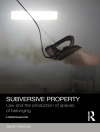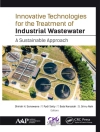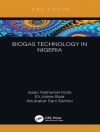R. Wagner The European list of wastes (LOW) (Commission Decision 2000/532/EC and updates) is the basic foundation for the implementation of waste legislation in Europe. It contains a harmonized list of different types of waste and categorizes them according to their origin or generation process. It provides for a uniform description of wastes through the application of a uniform nomenclature and the assignation of certain waste code numbers, for example, in permits or for monit- ing purposes. It also labels those hazardous wastes that are subject to a number of special provisions in both European and national legislation, for example, with regard to monitoring, licenses for installations, and national obligations regarding giving notice and transfer of responsibilities. The Waste Catalogue Ordinance (AVV) transposed the European LOW into German legislation in late 2001. This ordinance encompasses 840 codes of waste in 20 main chapters, classifies 400 types of waste as hazardous, and contains mirror entries for about 200 types of waste. The latter term classifies waste either as hazardous or non-hazardous, depending on certain physical or chemical properties. The ordinance defines 14 hazard criteria (H criteria), including criterion H14 “ecotoxic, ” in order to classify waste with regard to properties that render it hazardous. Unfortunately, the LOW is incomplete. Depending on the classification of h- ard, specific concentrations of solids are laid down for the majority of properties relevant for health and workers’ protection.
İçerik tablosu
Summary and Background information of the Ring Test.- Overview on the Results of the Ring Test.- Legal and Organisational Background of the Ring Test.- Selection and Characterization of Test Samples and Eluates.- Ring Test Data Evaluation.- Range of Reference Tests in Aquatic Tests.- Range of Reference Tests in Terrestrial Tests.- Presentation of the Basic Test Battery.- Algae Tests.- Daphnia Tests.- Luminescent Bacteria Test.- Plant Tests.- Earthworm Tests.- Lemna Growth Inhibition Test.- Toxkit Tests.- Pseudomonas putida Growth Inhibition Test.- Ceriodaphnia dubia Chronic Toxicity Tests.- Genotoxicity Tests.- Earthworm Reproduction Tests.- Enchytraeid Reproduction Tests.- Collembolan Tests.- Earthworm Avoidance Tests.- Bacteria Contact Test.- Additional Investigations.- Reproducibility and Repeatability of the Results of the European Ring Test on the Ecotoxicological Characterisation of Waste.- Comparison Between Toxkit Microbiotests and Standard Tests.- Comparison and Characterization of OECD Artificial Soils.- Leaching and Chemical Speciation Modeling of Wastes.- Ecotoxicological Response of Three Waste Samples in Relation to Chemical Speciation Modeling of Leachates.- H14-Navigator Uses Topic Maps as Application Data Model.- Further Development and Future Application of Biotests in Waste Characterization.- Test Recommendations.- Ecotoxicological Characterisation of Waste as an Instrument in Waste Classification and Risk Assessment.












